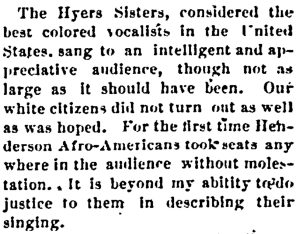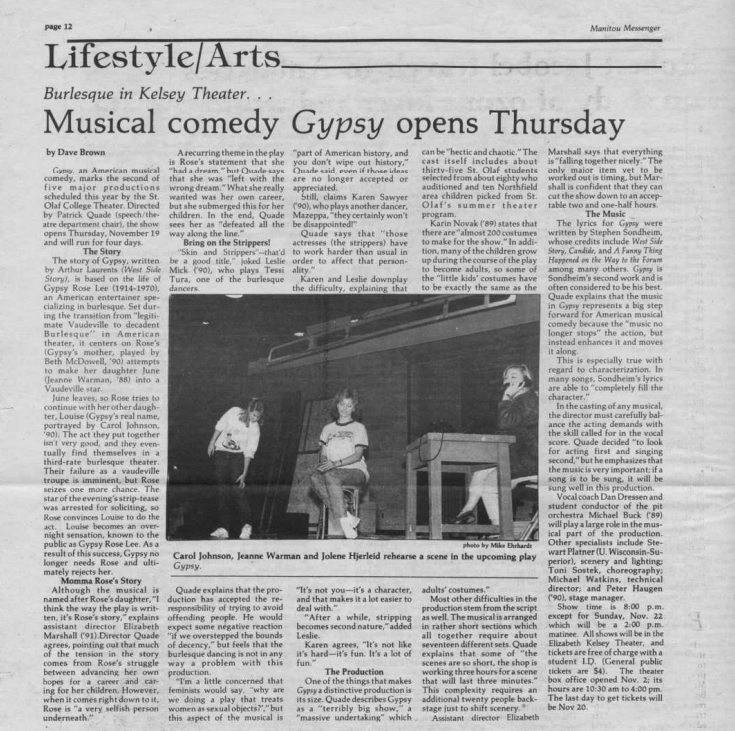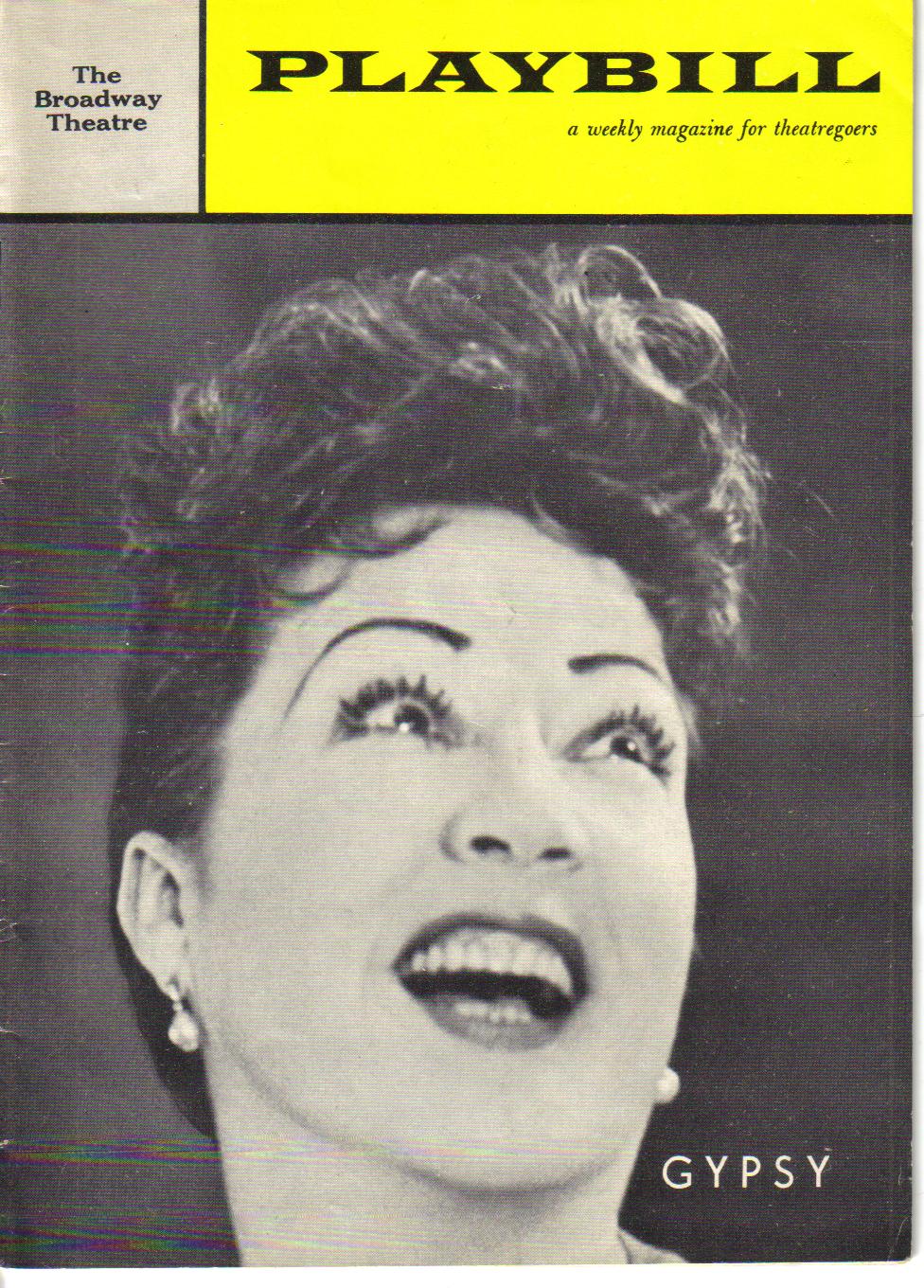Over the century since Hammerstein and Kern wrote the musical Show Boat, discussions of its importance, influence, and problematic aspects have been studied and discussed by scholars everywhere. It is undeniable that the show has made a huge impact on the musical theater industry, with it being the first integrated show, as well as being one of the first shows to speak on more controversial topics instead of just being a spectacle. At first glance, any audience member may expect a love story between the two main characters, or a story about a family owning a show boat.3 However, it also tells the story of the racial and class tensions at that time, highlighting the life and struggles of a black ensemble alongside a white one. The musical aspect helped with this. Hammerstein took care to write lyrics that were deeply seeped in the perspectives of individual characters, with their hopes, dreams, regrets, and longings illustrated.3 One of the most famous songs from the show, “Ol’ Man River,” is a particularly great example of this, with it having had profound reactions from white audiences of the time. Paul Robeson, who played the role of Joe in the original show, recognized what it could do, even as he revised the lyric to give the lie to any notion of Black passivity in the face of suffering. For his own concerts, Robeson was known to adjust a few key words, shifting the focus from singing about resigned weariness to voice a commitment to fighting for justice for racialized and working-class people.3
While the way the racial plot points were portrayed in Show Boat were insensitive, there is still much to be said about how it commented on something very real. Show Boat was written just over one year, and was based off of a best selling novel by Edna Ferber. Ferber herself was inspired by a real show boat, pictured below.
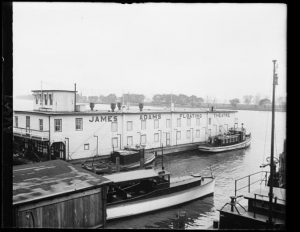
The boat which inspired Ferber’s novel, Show Boat
The original name of the Show Boat is the James Adams Floating Theatre, and was originally located in North Carolina, as opposed to Mississippi where the book is set.4 It was staffed with a 25 person crew, who were African Americans.5 Shown below is a photo of the crew on board the boat, quite similarly mirroring what is portrayed in the musical adaptation.
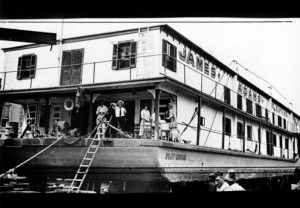
African American workers on the James Adams Floating Theatre
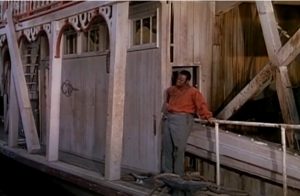
A still from the 1957 movie adaptation of Show Boat that depicts Joe singing “Ol’ Man River” from the show boat.
This shows that the portrayals in the show, while complicated and insensitive, are ultimately an illustration of a real situation that people were in. Hammerstein defends the show as well, stating, “We believe that the Negro in Show Boat emerges with honor and respect and affection and that this play has always been good for the Negro.2”
In the height of blackface minstrelsy, a show where black people could exist and perform as themselves was revolutionary. Pairing it with an onstage spectacle, the show was able to speak on deep, controversial themes of interracial marriage, treatment of black people, and the relationships therewithin, and bring those themes to a larger, more affluent audience through Broadway. That being said, there are still racially insensitive and downright racist elements of “Show Boat” that should be acknowledged and addressed in today’s society.
Sources:
1 – https://www.loc.gov/pictures/resource/hec.36106/
2 – https://drive.google.com/file/d/1jKyq44hPE2M6mezSsnPbOPAvG3a_y3Wc/view
3 – https://rodgersandhammerstein.com/the-enduring-relevance-of-show-boat/
4 – https://en.wikipedia.org/wiki/Show_Boat_(novel)
5 – https://www.chesapeakebaymagazine.com/the-chesapeakes-floating-theatre/


